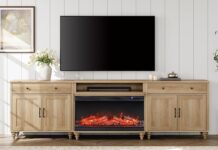 It’s time to shake up your PC Gaming Setup! Whether you’re starting from scratch or fine-tuning what you already have, it’s really important to get the gear that will make your gaming experience the best possible. Here are just a few ways to get started.
It’s time to shake up your PC Gaming Setup! Whether you’re starting from scratch or fine-tuning what you already have, it’s really important to get the gear that will make your gaming experience the best possible. Here are just a few ways to get started.
Selecting the right Gaming PC
I guess it always starts with the heart of the operation, which is your actual gaming PC. Whether you like to build a desktop yourself, or buy something out of the box, there’s probably a solution out there that fits you. There are nearly 100 out of the box desktop solutions available for you online at BestBuy.ca and about 70 gaming laptops. When choosing a Gaming PC, you should be thinking hard about what type of games you’ll be playing and how much power and speed you’ll need out of your machine. For example, if you’re going to be doing a lot of VR gaming, make sure that you have the right type of graphics support for it. If you’re purchasing a gaming desktop, make sure that it has a “VR Ready” label tagged to it. It’s the safest way to ensure you can hook that VR Headset up to it successfully. There are some laptops out there now that will support VR readiness too!
If you’re not keen to take an out of the box solution and can invest the time and effort, you can custom build your own machine from the ground up. A couple of years back, Steven Hill did a pretty comprehensive blog about building your own gaming PC. If you’re interested in this, have a look. From there, Brad Moon has some really helpful blogs on components that will add more to your gaming experience. Please check these blogs too when you have a moment!
How to Improve your PC Gaming Experience with an SSD or New Hard Drive
How can I Speed Up my PC Gaming Computer?
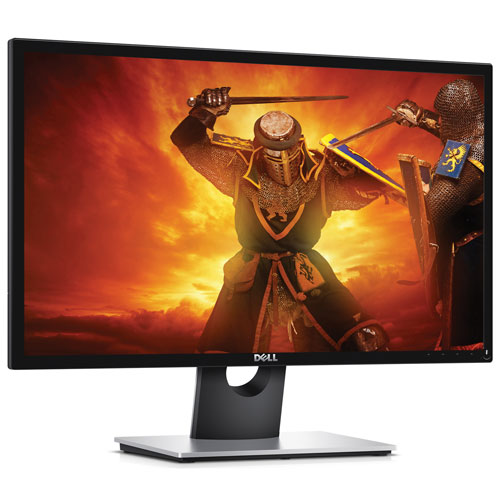
Selecting the right monitors for your PC gaming setup
Once you’re past selecting or piecing together the right system, a great monitor (or monitors) are a must. Naturally, you may end up strapped for space depending on the size of your desk, but if you aren’t, you’ve got so many amazing options out there. I’ve become really curious about buying a larger curved monitor, but since I work with dual screens all day, I do still prefer that type of setup. There are a couple of things in particular that you really need to keep in mind when you’re buying monitors, especially with regard to resolution and even your viewing angle. If you’re not going to be viewing things straight on (which often is the case with dual screens,) it might change the type of monitor you should pick up. My colleague Jacob McCourt does a really good job of breaking down gaming monitors and how to pick the perfect one. Check out his recent blog entitled “How to pick a new gaming monitor” to learn more about some of these nuances while you’re figuring out what the best fit is for your desktop.
Selecting the right mouse and keyboard for your PC gaming setup
Another pretty important part of your PC gaming setup is selecting the right mouse and keyboard. While a powerful system and the perfect monitors are a good start, you won’t get anywhere without the right inputs. All gaming keyboards aren’t built equal. While there are a lot of different choices out there, a good keyboard isn’t a place where you want to cut corners or costs. If you’re a serious gamer, you’ve experienced how a standard membrane-based keyboard with very little input flexibility is about as useful as scuba gear in the desert. You can’t hit many keys at once, and a lack of key rollover can often be your own undoing. This is where you really want to get it right with a good gaming keyboard. In my opinion, a mechanical keyboard with separate input cherry switches is the way to go. Depending on how badly you need them, a good keyboard with good and adaptable backlighting (some keyboards even let you colour individual keys differently than others) and the ability to set your own macros will always give you a serious advantage too. I’d say that my favourite is the Razer Blackwidow Chroma which has never let me down. I’ve also had Logitech gaming keyboards at home since before the dawn of mechanical keyboards and I’ve always liked them too.
If you’re searching for a keyboard and want to know more about why a good mechanical keyboard will give you a leg up, please check out Brad Moon’s helpful blog on this very subject. Steven Hill just did a recent blog on choosing the right gaming keyboard too and that is definitely worth a read too!
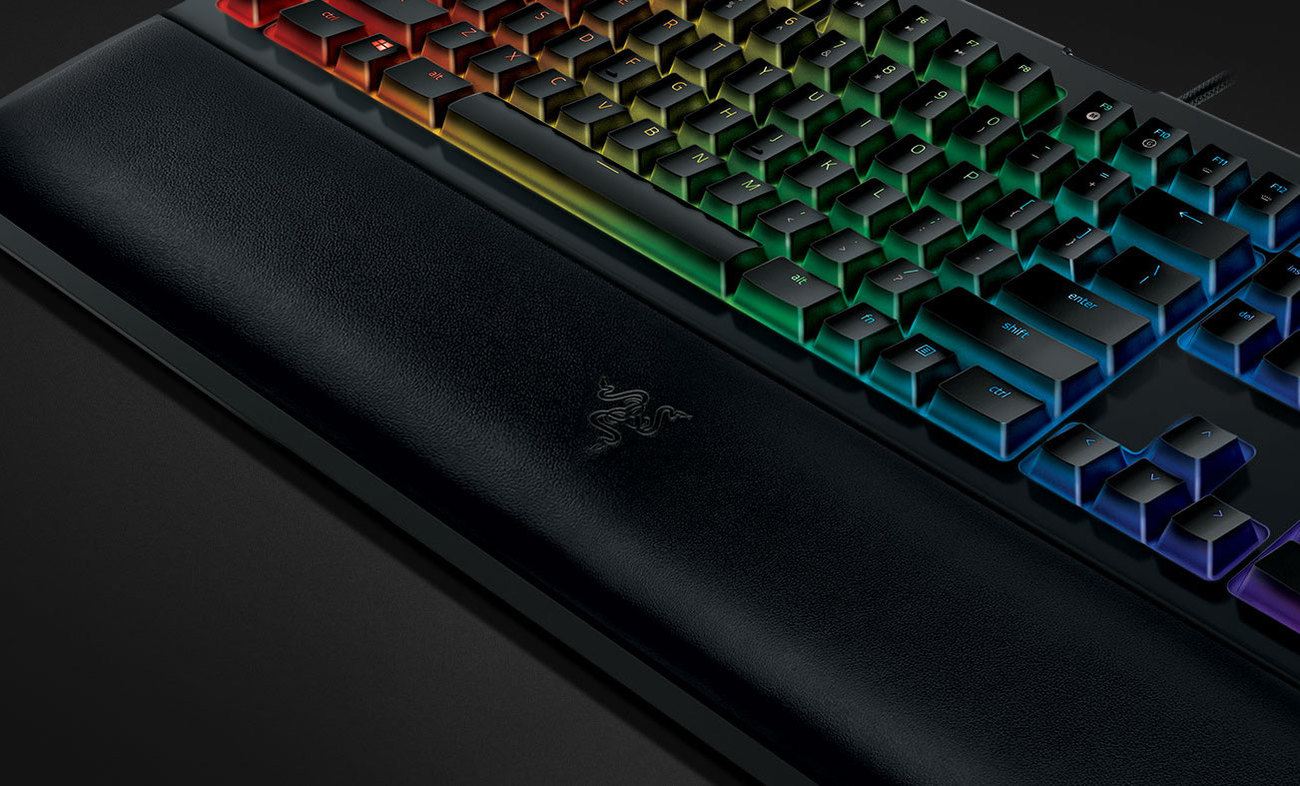 You’ve also got to make sure that you select the right gaming mouse to compliment your setup. Nowadays, the amount of ease a good mouse gives your everyday gaming is much more than just an ergonomic feel. The inclusion of extra buttons are so crucial to your gaming experience, since it will allow you to customize your gameplay as much as macro keys will on a keyboard. You can program entire hotkey sequences that play out with the push of a button rather than keyboard command, and there are a lot of choices out there designed to make your life easier. Take the ASUS ROG Spatha Wireless Gaming Mouse which has a dozen customizable buttons! That might be more than you need, but it’s a big win.
You’ve also got to make sure that you select the right gaming mouse to compliment your setup. Nowadays, the amount of ease a good mouse gives your everyday gaming is much more than just an ergonomic feel. The inclusion of extra buttons are so crucial to your gaming experience, since it will allow you to customize your gameplay as much as macro keys will on a keyboard. You can program entire hotkey sequences that play out with the push of a button rather than keyboard command, and there are a lot of choices out there designed to make your life easier. Take the ASUS ROG Spatha Wireless Gaming Mouse which has a dozen customizable buttons! That might be more than you need, but it’s a big win.
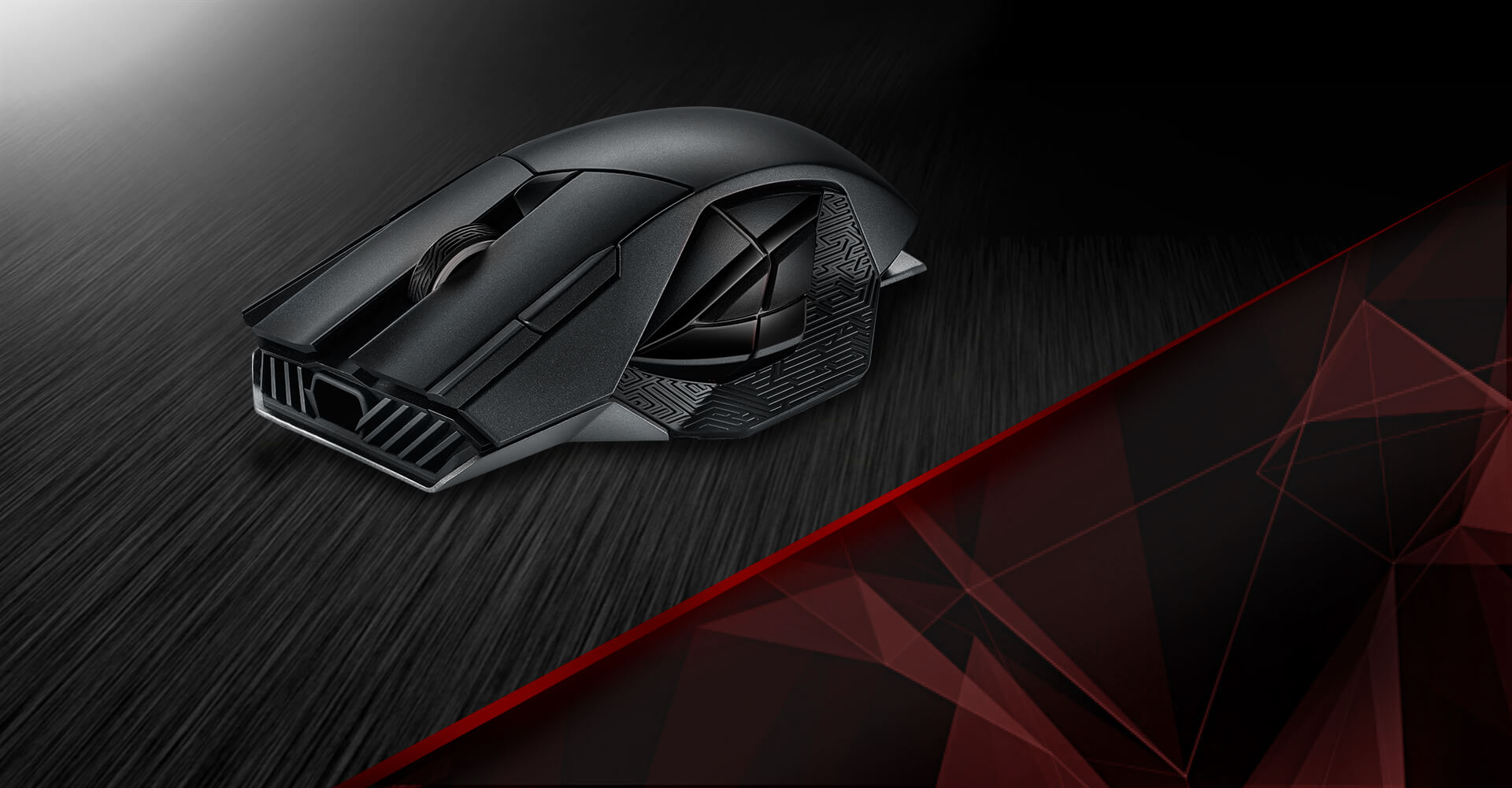
Accuracy on-screen is key too. Gaming mice measure input accuracy on a DPI (Dots Per Inch) basis. What this essentially means is that for every inch you move your mouse, it will move at however many on-screen pixels you’ve enabled your mouse to go. Take the Corsair Scimitar PRO RGB 16000 DPI Optical Gaming Mouse for example. At its highest setting, it’ll move 16000 pixels per inch. You’ll have to fiddle with whatever is your most ideal setting, and truth be told, the max setting of 16000 DPI might be far more than most people need. The mouse you pick out should also have different ways of adjusting DPI. While I would think that most do it with in-house software, I’ve also seen some that have switches on the mouse themselves for on the fly adjustments. If that Corsair model isn’t for you, there are literally dozens of others to choose from. Chris Loblaw comes to the rescue for this very topic in his blog “How to Improve your PC Gaming with a Dedicated Gaming Mouse”
Selecting other peripherals for your PC gaming setup
Depending on the type of games you like to play, you might need other peripherals too. If you’re my dad, who I think still believes Flight Simulator is the greatest gaming series in the history of video games, I see joysticks in your future. By the way, if you too are really into Flight Simulation games, you can even add more to your desktop setup like flight instrument panels.
If you’re a racing gamer, the experience isn’t complete without an actual racing wheel (and if you’re serious enough, pedals and/or shifter knobs.) Racing games definitely aren’t the same with a keyboard and mouse. They’re not even that great with directional pads (and thankfully, analog sticks have given us a bit more to work with on consoles in recent years.) In all honesty though, there’s nothing like finding and playing with a good racing wheel for those types of games.
Thankfully, we’ve got you covered here too to help you find the perfect pickup. Chris Loblaw literally just did a blog on selecting the right joystick or racing wheel. Good racing wheels can be pretty pricy, but trust me when I say that they’re worth it and the better you get, the better overall experience you’ll have.
Sound is a really crucial part of your gaming experience too, especially if you’re playing something really music or SFX heavy, or listening in (and contributing) to team communication.
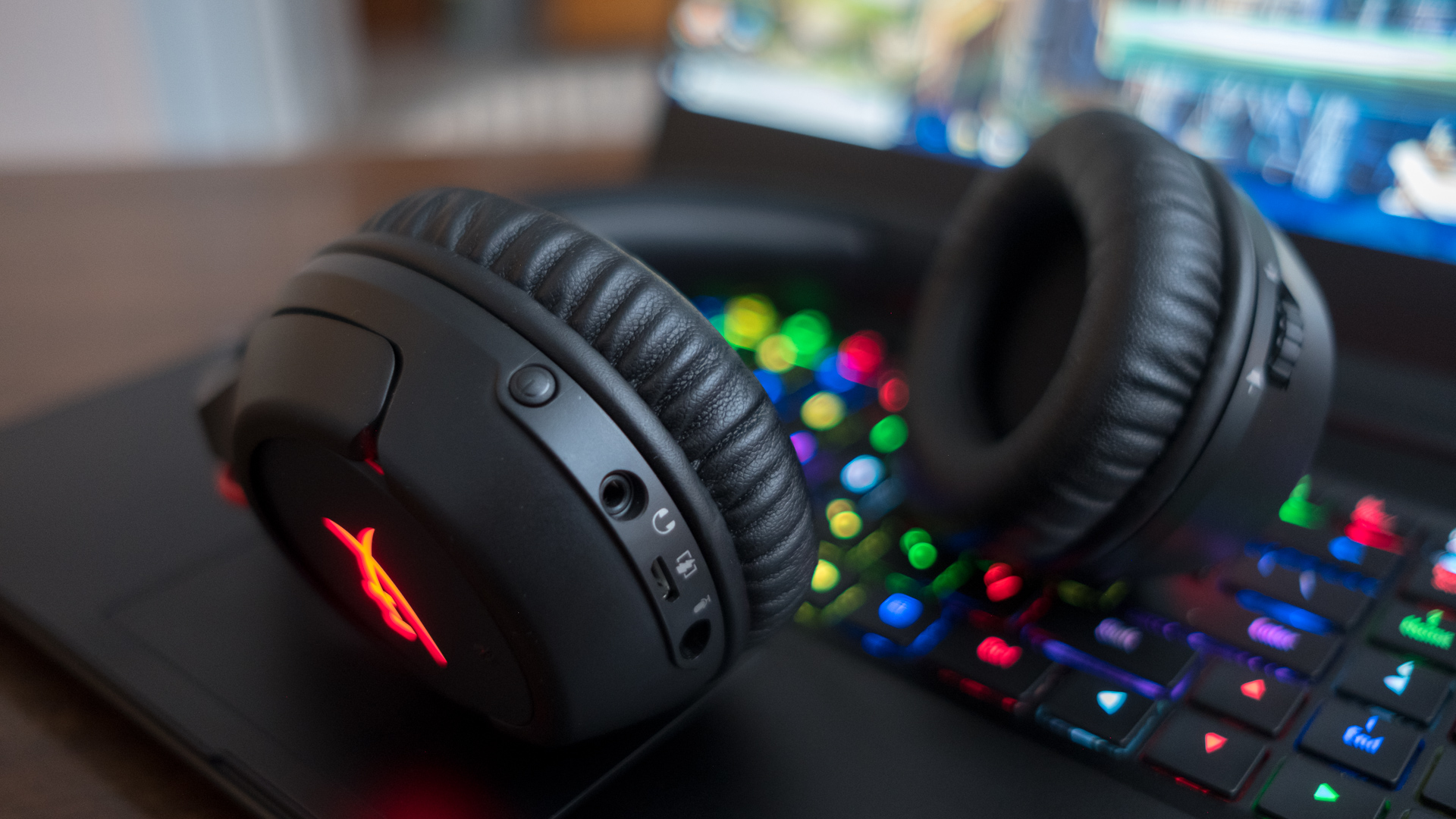
Selecting the perfect headset for your gaming setup is key. Recently, I wrote a blog on the importance of having a good headset in PC gaming. One of the key things about selecting the perfect headset is making sure that it does exactly what you need it to. If you’re playing a lot of team-based games, there are headsets with noise cancelling microphones like the SteelSeries Arctis Pro Gaming Headset. This means that you can keep pace with your teammates without background noise getting in the way. Gaming headsets have also gone wireless, with some boasting serious battery life. Just about all the headsets from companies like Kingston (in their HyperX line,) Logitech and Razer offer similar headsets in both wired and wireless types. It really comes down to whichever you prefer. I’m kind of old school and have always had wired headsets, but I’ll probably take a look at my wireless options the next time I upgrade. I just have to remember to stick it back on the charger from time to time, of course.
If you don’t need a headset and just want a great surround sound system, you can still bring home multi-speaker Surround Sound setups like the Logitech Z506 5.1 Surround Sound Speaker set. This set also features other inputs so that you can plug in some of your other electronics without having to buy another sound system to support them.
Selecting the right furniture for your PC gaming setup
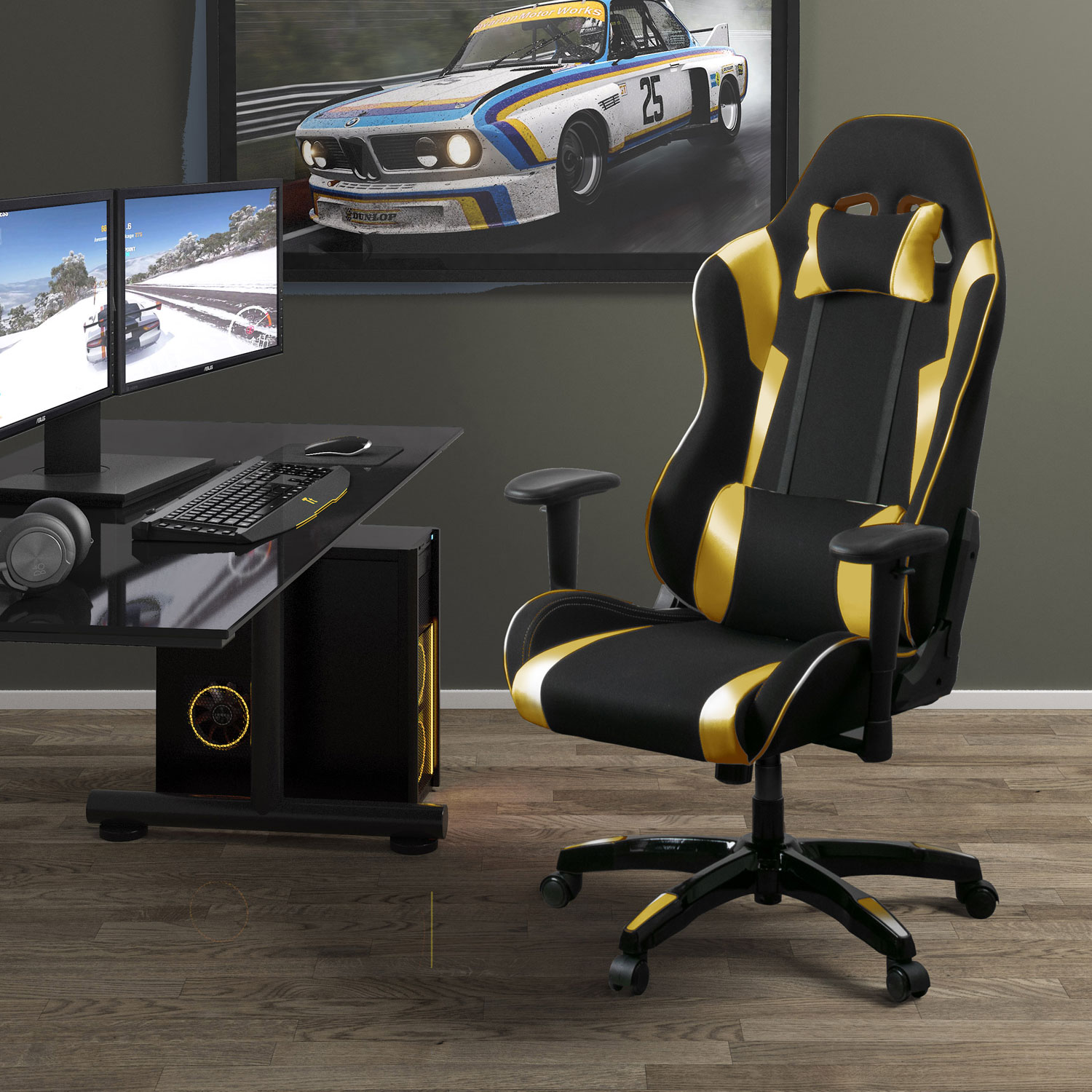 I’m one of those people that think the furniture you select to support your gaming rig is every bit as important as the system choice itself. After all, you’re going to be spending long hours playing with this thing and you may as well do it in comfort. I’ve been around a full time office environment for the last 15 years and in that time, I’ve seen a lot go right (and go wrong) about sitting at a desk in front of a computer for hours on end.
I’m one of those people that think the furniture you select to support your gaming rig is every bit as important as the system choice itself. After all, you’re going to be spending long hours playing with this thing and you may as well do it in comfort. I’ve been around a full time office environment for the last 15 years and in that time, I’ve seen a lot go right (and go wrong) about sitting at a desk in front of a computer for hours on end.
To make sure you’re comfortable while you’re gaming, think about some of the furniture that you might need. The first thing that usually comes to mind is your chair. Depending on how long you play, you should think about finding a chair that is the best ergonomic fit for you. Even gaming chairs have taken a real step forward the last few years with keeping the spine and body in mind, and there are a lot of gaming chairs that now provide the same feel and ergonomic support as your standard office chair. Truth be told, gaming chairs look a lot cooler than the standard boring office chair too. Check out this one from CorLiving that looks like it was ripped straight out of a sci fi film!
If you’re not gaming at a desk and want something you (and your laptop) can kick your feet back on, there’s also this chair from X-Rocker that gives a subtle nod to recliners and features a Bluetooth speaker on the back.
If you’re stuck between an actual office chair and a gaming one, you might want to have a read through Leo Bond’s blog “Why Gaming Chairs Aren’t Just for Gaming” and see if that sways you over to the gaming side of things!
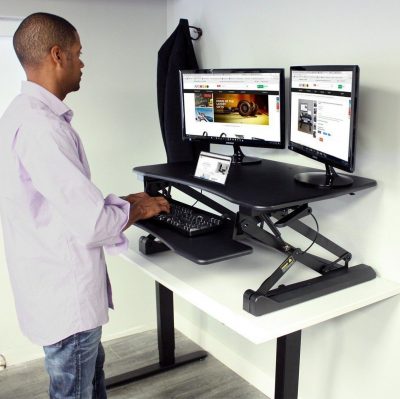 If you’re in the market for a new gaming desk, think about whether you want a standing or sitting desk, or one that’s capable of doing both and adjusting on the fly. If you already have the right desk and want to think about adding something to help you switch between standing and sitting, you might want to take a look at a Standing Desk Riser, like this one from Boost Industries. The thing I really like about this one specifically is the amount of surface area it has. You can fit a really large monitor (or two mid-size monitors) and with the massive keyboard tray, you can fit it and your mouse pretty comfortably. A desk riser is a little bit of an unorthodox thought for PC gaming (and maybe it’s a telltale sign of how old I’m getting that I think about these things) but I’m sure your back will thank you in later years for putting it through all of those all nighters in your younger days.
If you’re in the market for a new gaming desk, think about whether you want a standing or sitting desk, or one that’s capable of doing both and adjusting on the fly. If you already have the right desk and want to think about adding something to help you switch between standing and sitting, you might want to take a look at a Standing Desk Riser, like this one from Boost Industries. The thing I really like about this one specifically is the amount of surface area it has. You can fit a really large monitor (or two mid-size monitors) and with the massive keyboard tray, you can fit it and your mouse pretty comfortably. A desk riser is a little bit of an unorthodox thought for PC gaming (and maybe it’s a telltale sign of how old I’m getting that I think about these things) but I’m sure your back will thank you in later years for putting it through all of those all nighters in your younger days.
Hopefully I’ve given you a few good suggestions and things to think about when upgrading or going for that next PC. Do you have any personal favourites or suggestions for our blog readers to consider with their next PC Gaming setup? Please tell us in the comments below!



